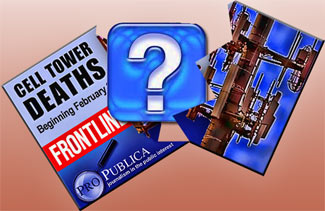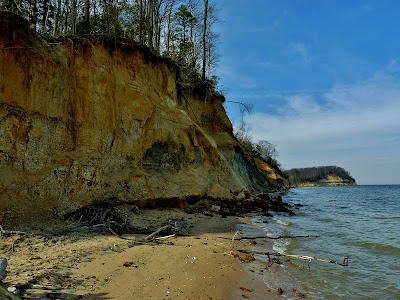Saturday, February 25, 2012
Wednesday, February 22, 2012
Frontline Program "Cell Tower Deaths" Not Aired
February 21, 2012 - For over a week Frontline trumpeted "Cell Tower Deaths" on its Public Broadcasting Service stations. It was expected to air today, but the eight-
 months-long investigation was unexpectedly canceled last Wednesday.
months-long investigation was unexpectedly canceled last Wednesday.A spokesperson for the WGBH-TV-produced program informed Wireless Estimator he could not discuss the reason why the prime time investigation was suddenly yanked, but did state that it would be rescheduled.
However, many industry workers, family members of deceased tower technicians - the genesis of the investigation - and the general public are concerned that Frontline might permanently shelve the program, and they have started a petition for Frontline to air the industry probe.
Within four days, over 500 people have signed the petition with approximately 75 signers voicing their opinions regarding worker deaths, turfing contractors and the generally unprofitable state of wireless contractors - other than turfing firms.
Corporate pressure a concernCommenters on the petition site and individuals contacting Wireless Estimator registered their concerns that PBS and their partner in the investigation, Pro-Publica, buckled in to corporate censorship because they would lose their funding or have advertisers such as AT&T pull their ads.
Although it is unknown why the documentary was pulled at the last moment, based upon the independence accorded to the two non-profit media outlets, it would seem unlikely that outside pressure resulted in the cancellation.
Funding for Frontline is provided through the support of PBS viewers and by the Corporation for Public Broadcasting as well as a number of institutions such as the Catherine T. MacArthur Foundation.
As the nation's third largest advertiser, AT&T's ad spend last year was approximately $3 billion, an impressive sum which floats in with a cloud of clout. It also spent $40 million on advertising between May and October to promote its failed $39 billion purchase of T-Mobile,
But the telecom giant doesn't provide funding to Frontline. Although the carrier might occasionally underwrite a local PBS station's programming, public broadcasting is not a target for AT&T's philanthropy.
ProPublica is primarily foundation supported, but last year allowed advertising to be placed along with rigid guidelines. To date, neither AT&T nor any other carrier has placed ads with the Pulitzer Price-winning website.
Deceased's family members press for its release"Frontline needs to air their probe into cell phone worker's deaths immediately. The public does need to know and understand that their communications service does come at a very high cost," wrote Gina Kopfman on the petition website. Her 21-year-old stepson, Jacob, was working in Missouri when he fell to his death August 11, 2011.
Bridgette Hubble said, "My husband was killed on the job...yes, air this!" Jonce Hubble and Barry Sloan, 37, were killed in 2010 when a bucket truck cut a guy wire, collapsing the tower they were working on in Anniston, Ala.
Mariah Remington talked about her dad, Dirk, who died after a fall.
"My nephew died in a cell phone tower accident and something needs to be done to protect these workers better," said Sara Pearson.
After learning about the dangers involve in working aloft, a number of mothers voiced their concerns about their children. "My son is in this business and I want him to be safe. Big corporations make millions and these guys risk their lives for almost minimum wage," explained Barbara Lewis.
The Frontline trailer said that complex layers of subcontracting insulate the carriers against liability, despite the fact that they set the aggressive schedule that can force subcontractors to cut corners in order to meet deadlines, and those ambitious timeframes may be one of the reasons why workers are dying.
Some petition signers said they were hoping that the investigation would focus upon the turfing model, a price point program that may set contractors up for failure.
The petition reads: "We request you to air your episode delving into cell phone worker's deaths immediately. Our plight to bring cell reception to every corner of this beautiful nation should not go unnoticed. People need to know that for every bar of service they see looking down at their cell phone, it comes at a cost."
Source: WirelessEstimator.Com
If you agree that this program should be aired, please sign the petition below.
Monday, February 20, 2012
Wednesday, February 15, 2012
Calvert Cliffs State Park
Historical marker at the park entrance.
Calvert Cliffs State Park is a state park in Calvert County, Maryland, USA, situated on the Chesapeake Bay. On the 1612 John Smith map, the site is called "Rickard's Cliffes". The park is located in Lusby, Maryland.It is a short distance south of Calvert Cliffs Nuclear Power Plant operated by Constellation Energy.
Entering the forest on the Red trail.
Calvert Cliffs State Park is a day-use park featuring a sandy beach, unique fossils, recycled tire playground, a freshwater and tidal marshland and 13 miles of hiking trails located in Calvert County. The massive cliffs from which Calvert Cliffs SP was named dominates the shoreline of the Chesapeake Bay for thirty miles in Calvert County and were formed over 15 million years ago when all of Southern Maryland was covered by a warm, shallow sea. When the sea receded 20-25 million years ago, marking the end of the Miocene period, cliffs were exposed and began eroding. Today these cliffs reveal the remains of prehistoric species Including sharks, whales, rays, and seabirds that were the size of small airplanes.
The woods slowly open up to a grassy wetland.
Thankfully the well made trail is off to one side and slightly elevated from the water.
Numerous dead trees populate the swamp and provide perches and homes to numerous birds.
Small footbridges traverse the many wet spots along the trail to the bay.
Beaver sign.
A submerged tree felled by one of the local beavers.
Beavers are most famous, and infamous, for their dam-building. They maintain their pond-habitat by reacting quickly to the sound of running water, and damming it up with tree branches and mud. Early ecologists believed that this dam-building was an amazing feat of architectural planning, indicative of the beaver's high intellect. This theory was questioned when a recording of running water was played in a field near a beaver pond. Despite the fact that it was on dry land, the beaver covered the tape player with branches and mud. The largest beaver dam is 2,790 ft (850 m) in length—more than half a mile long—and was discovered via satellite imagery in 2007. It is located on the southern edge of Wood Buffalo National Park in northern Alberta and is twice the width of the Hoover Dam which spans 1,244 ft (379 m).
The North American Beaver is the state animal of Oregon and New York, and a common school emblem for engineering schools, including the California Institute of Technology and MIT, the Massachusetts Institute of Technology.
American Beaver Skull
Castor canadensis
Gouache and Silverpoint
©2009 Melisa Beveridge
A Bluebird wintering at the park perches on some deadwood.
After a short 2 mile hike the bay is visible.
The slowly eroding sandy soil of Calvert cliffs.
Fossils aplenty wash up on shore here alongside shells and floatsam.
Sun worship.
The wetlands empty into the bay here at the beach.
At last, on my way back, the beaver makes an appearance, slapping his large, flat tail loudly on the water as a warning.
The trail back to the parking area always seems longer.
Subscribe to:
Posts (Atom)




































